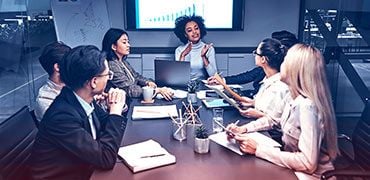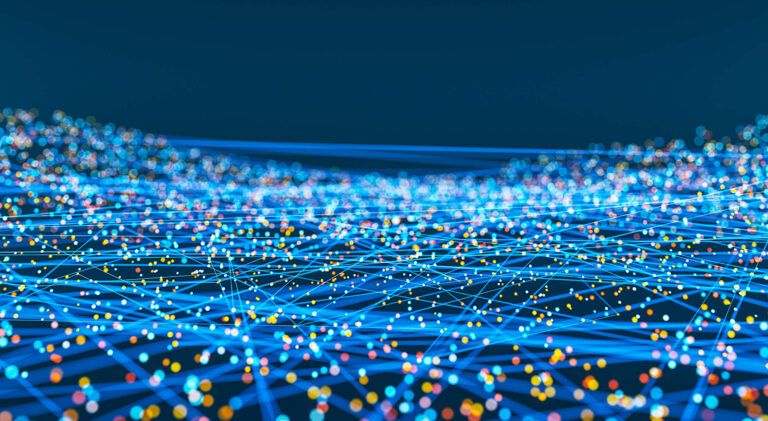What is Descriptive Analytics and Why a Data-Driven World Needs it

In the wake of global connectivity and unprecedented digitization, modern society generates an abundance of data each day. 1.145 trillion MB of data is created every single day, to be precise. While the significance of this information is undeniable, it must be leveraged to facilitate smart decision-making, improved customer experience, and personalized services. Enter big data analytics. In recent times, advanced techniques like descriptive, predictive, and prescriptive analytics have transformed the business landscape and unveiled the power of intelligent, data-driven decision-making. But to begin with, what is descriptive analytics? Let’s find out.
What is Descriptive Analytics?
Often touted as the simplest form of data analysis, descriptive analytics answers the question — What happened? It refers to the interpretation of historical data to identify the changes occurring within an organization over time. Using a range of historical data, therefore, gives decision-makers a broad overview of company performance, sets benchmarks for progress, and paves the path for a foolproof business strategy.
Descriptive analytics employs two primary techniques: data aggregation and data mining. Prior to analysis, data must first be collated and segregated into manageable chunks to obtain insights. Businesses then use this information to understand their standing in the market and profitability so as to formulate a suitable plan of action.
Related Content: What is Business Analytics?
Why is Descriptive Analytics Important?
The global big data analytics industry is projected to reach a valuation of $116.07 billion by 2027 and for good reason. And what is descriptive analytics doing in this scenario? Well, it is one of the first steps to decision-making in companies across the board. Using simple mathematics, data visualization tools like pie charts, and statistical tools, descriptive analytics provides important information on the general functioning of businesses and proves indispensable to everyday operations.
Reports such as inventory, sales, warehousing, and workflow can offer a holistic picture of a company’s performance. They all have descriptive analytics at their core. It helps assess business operations and behavior, draw temporal comparisons, spot relationships, and anomalies, and reveal outliers that demand further investigation.
When used in conjunction with predictive and prescriptive analytics, descriptive analytics can indicate a business’ strengths and weaknesses. Therefore, it is useful for recognizing trends and causations that are essential to business plans.
Some of the common metrics used in the process of descriptive analytics include:
- Pricing ranges
- Sales growth figures
- Number of users
- Revenue per subscriber
Examples of Descriptive Analytics in Action
Descriptive analytics is best understood in terms of its industry-wise use. Here are four examples of descriptive analytics in action:
Use Case 1: Traffic and Engagement Report
Most organizations track engagement in the form of web traffic, social media analytics, and the likes. The reports use raw data generated by user interaction on websites, advertisements, and social media, and use it to draw a comparison with current metrics. This is where it also identifies trends and anomalies which helps organizations chart their future course of action. For instance, Google Analytics shows traffic information to offer insights into a page’s performance and the rate of conversion with respect to marketing campaigns.
Use Case 2: Analysis of Financial Statements
These are periodic reports that contain detailed information on the fiscal gains, losses, and expenditures of a company. In essence, it is a holistic overview of a company’s financial health. Several types of financial statements, including cash flow statements, balance sheets, and income statements, are some of the most common yet highly effective examples of descriptive analytics, which greatly benefit individuals and enterprises alike.
Use Case 3: Demand Trends
Descriptive analytics also prove useful in identifying customer preferences and how they change over time. Understanding such behavioral patterns help companies make data-driven assumptions and strategize their marketing campaigns and product launches accordingly.
Netflix is an excellent example of descriptive analytics as it gathers vast amounts of users’ in-platform data to recognize trending shows and films. This allows Netflix to make appropriate recommendations to users and drives the internal decision-making mechanism about future content production.
Also Read: Is Mapping Consumer Insights the Secret to Surviving in a Competitive Market?
Use Case 4: Aggregated Survey Results
Market research is another field that benefits from descriptive analytics. Identifying relationships between trends and variables, it allows industries to gain valuable insights from focus group data, such as surveys. Such information then paves the way for diagnostic analytics to dig deeper into correlations and make plans. Product improvements and marketing campaigns are appropriate examples that spotlight the role of descriptive analytics in such situations.
What is Descriptive Analytics’ Impact on Business?
The most significant contribution of descriptive analytics to businesses is that it helps streamline the process of data analysis. The World Economic Forum estimates that human society will be generating 463 exabytes of data every day by 2025. That’s an unimaginable amount of data that only underscores the need for — organization, visualization, and access — the three elements that form the premise of descriptive analytics.
Corporations collect data from diverse sources: some structured and some unstructured. By investing in descriptive analytics, they can glean a holistic view of the essential information contained within the quantum of data. They can then utilize it to improve business strategy, drive innovation, and boost operational performance. Furthermore, data analytics is vital to identify key insights and patterns in historical data that are imperceptible to predictive or prescriptive analytics. This, in turn, facilitates productivity and leads to a driven, well-informed task force where each individual is given the agency to make a meaningful contribution.
What is Descriptive Analytics’ Toolkit Made of?
 At the heart of descriptive analytics lies the foundational elements of simple statistics, the measures of central tendency comprising mean, median, and mode. This is primarily used to tabulate metrics and organize data for deeper analysis. Other tools include visualization techniques, such as line and bar graphs, pie charts, and box and whisker plots. This helps present complex data in a comprehensive and accessible format to save time and resources. Furthermore, variance and standard deviation are also used as measures of dispersion.
At the heart of descriptive analytics lies the foundational elements of simple statistics, the measures of central tendency comprising mean, median, and mode. This is primarily used to tabulate metrics and organize data for deeper analysis. Other tools include visualization techniques, such as line and bar graphs, pie charts, and box and whisker plots. This helps present complex data in a comprehensive and accessible format to save time and resources. Furthermore, variance and standard deviation are also used as measures of dispersion.
Other Forms of Business Analytics
The role of descriptive analytics is highlighted by predictive and prescriptive analytics. The other two arms of business analytics look to the future and use descriptive analysis and incorporate additional data from various sources for further analysis. They go beyond simply providing information to actively influencing decision-making. While predictive analytics, as the name suggests, is concerned with forecasting future outcomes, prescriptive analytics takes a step further to recommend a suitable course of action based on the predicted outcome. In this manner, they work hand in hand to maximize positive output, minimize losses, and mitigate risks.
To kickstart a career in business analytics, explore these business analytics courses by Emeritus.
By Deyasini Chatterjee
Write to us at content@emeritus.org















